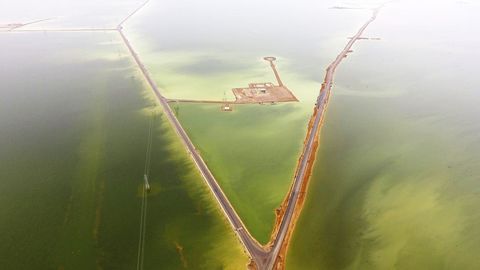Speaking to Shana, Touraj Dehghani, the CEO of the Petroleum Engineering and Development Company (PEDEC), said production and development of oilfields continued in the West Karoon Region despite harsh environmental conditions.
Severe flash floods hit several Iranian provinces over the past fortnight, killing dozens and sustaining hundreds of injuries.
Dehghani underlined the proximity of oil facilities in West Karoon region to the wetland, strongly denying allegations that the facilities had prevented the flow of flood water to the wetland, located in the southwestern province of Khuzestan.
Also called the Hawizeh Marshes, the wetland is a complex of marshes that straddles the Iraq and Iran border.
The marshes are fed by two branches of the Tigris River (the Al-Musharrah and Al-Kahla) in Iraq and Karkheh River in Iran.
The Hawizeh marsh is critical to the survival of the Central and Hammar marshes, which also make up the Mesopotamian Marshes, because they are a refuge for species that may recolonize or reproduce in the other marshlands.
The Hawizeh Marshes are drained by the Al-Kassarah. This river plays a critical role in maintaining the marshes as a flow-through system and preventing it from becoming a closed saline basin.


Your Comment